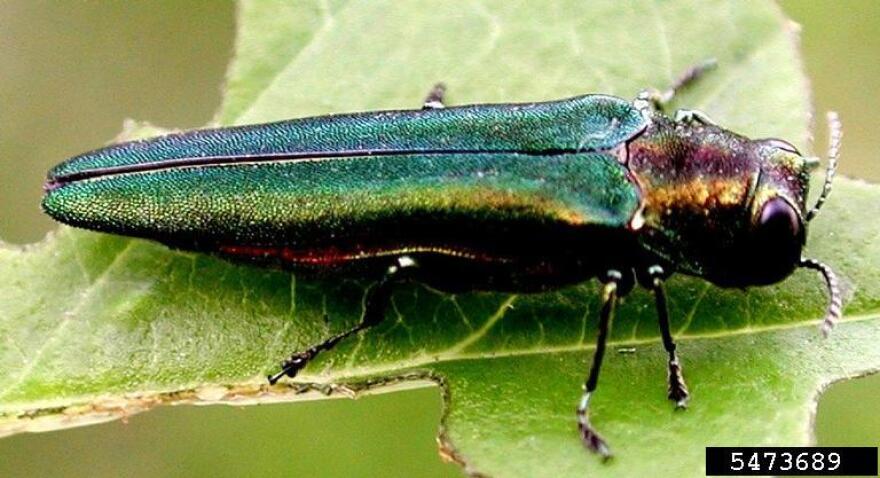Emerald Ash Borers have been discovered within 100 miles of South Dakota—and a state forestry expert says it’s a matter of time before the beetles make their way into the state. But, the expert says this is not the time to start preparing for the borers.
NOTE: A complete interview with SDSU's Dr. John Ball follows the text.
The Omaha area is currently going through an infestation of Emerald Ash Borers—the insects are making their way north and approaching the South Dakota border, S-D-S-U Forestry Professor John Ball says it may not be long before the first beetle reaches the state.
Dr. Ball says, “About an hour and a half. And I say that because, the infestation that was found in the Nebraska was around the Omaha area. And, of course, since the initial find, they found a few others, but still within the general vicinity. The beetle doesn’t travel necessarily, just on its own. It’s transport between communities is via trucks and cars, by firewood. So when I say an hour and a half, that’s about how long it’s gonna take to drive a hundred miles from the infestations in Nebraska to the South Dakota border.”
Ball says there are remedies available to combat emerald ash borers—but he says being proactive is not the answer yet.
According to Ball, "The problem with going out and injecting your trees now, or putting pesticides in the soil now, is that there’s a very, very, VERY high probability your tree does not have the infestation, nor does it have an infestation nearby. So, you’re injecting your tree to some injury with injections, but it doesn’t need to be yet. Or you’re putting chemicals in the soil, which aren’t really doing any good, and they certainly cause a little harm.”
According to Ball, one of the first signs of infestation is an increase in woodpecker activity, since the beetles are a favorite snack of those birds. He says if someone notices more woodpeckers, or sees an ash tree or log with small “D” shapes on it, his office would like to know.
To hear a complete interview with Dr. John Ball, click below:




